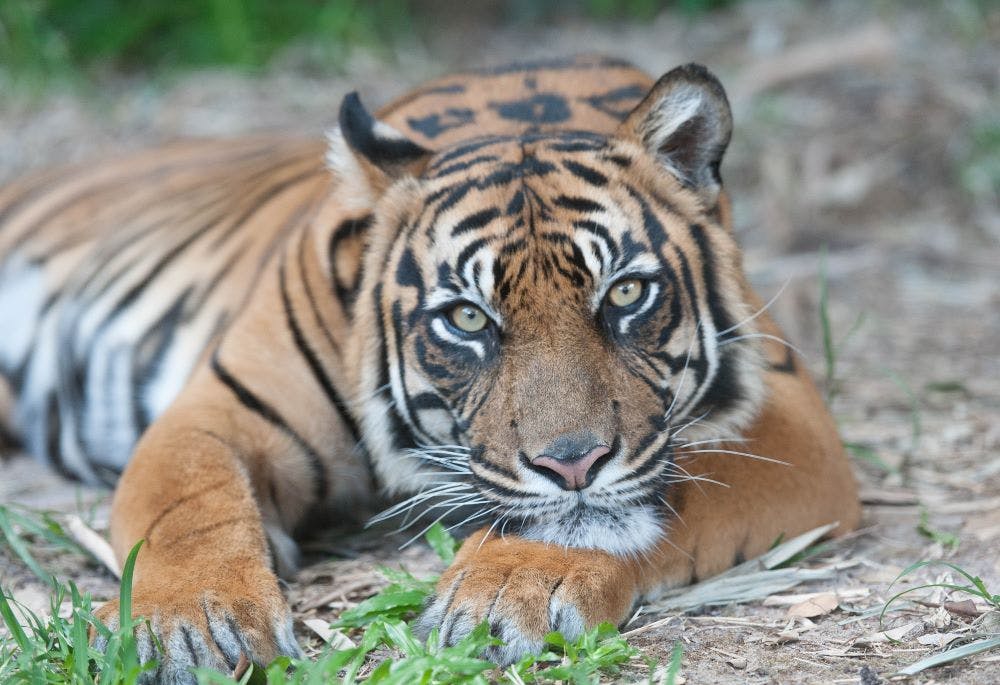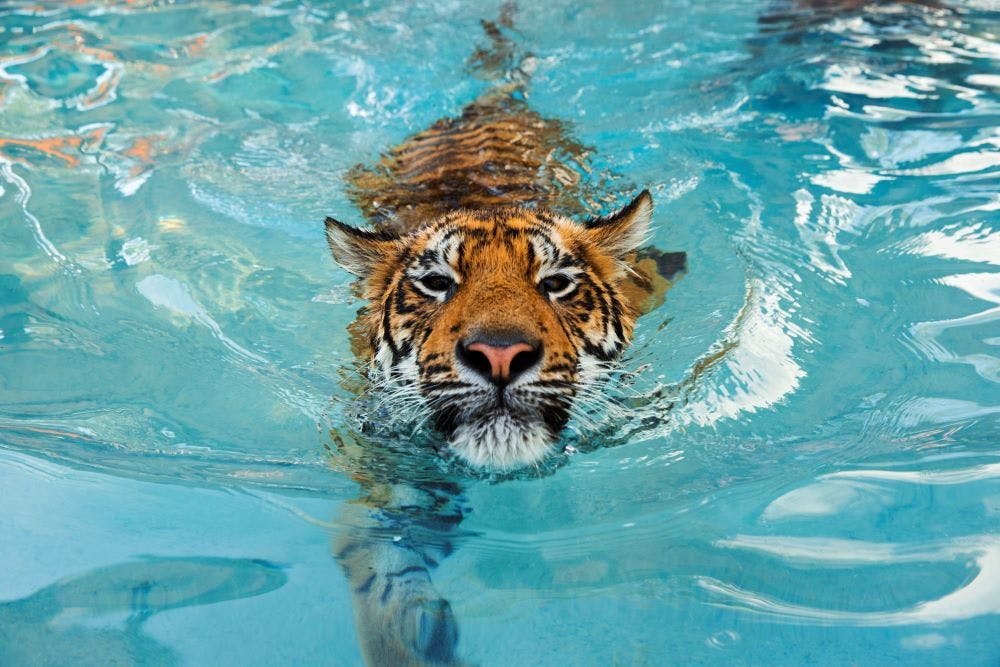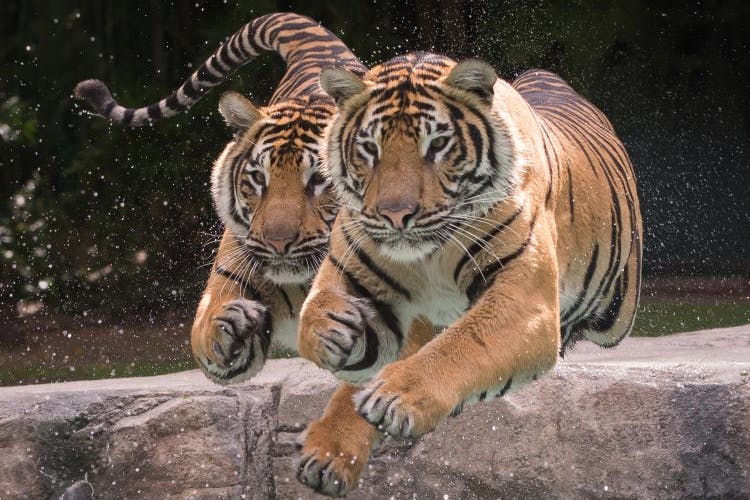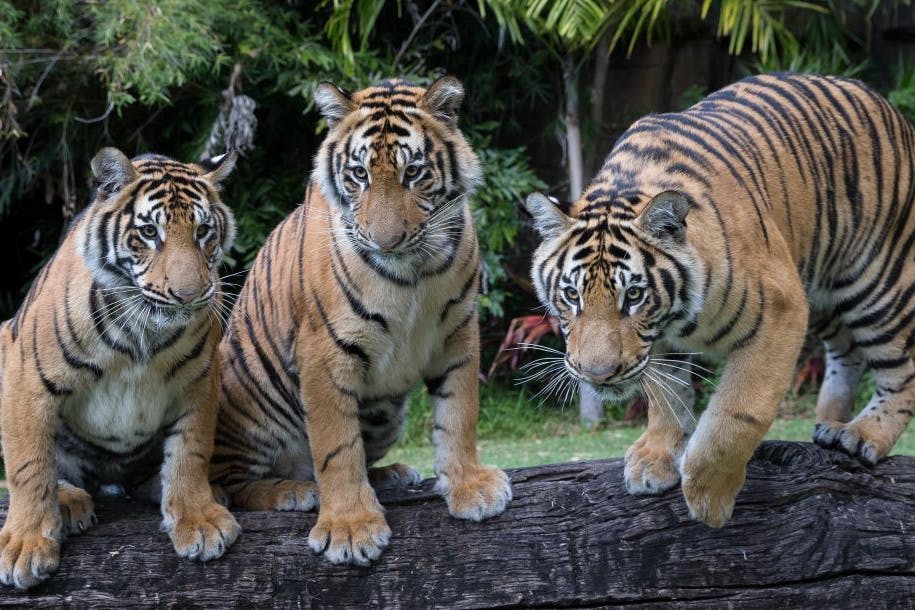The Challenge
The tiger has lived on this planet for more than two million years. Today tigers occupy only about 7% of their historical range. Tigers face an uncertain future due to depletion of habitat and abundance of prey species, poaching and human conflict where tigers habitat and human habitation overlap.
With an estimated 4,000 left alive in the wild today, tigers need all the help they can get. Some reviews have suggested that tigers face iminent danger of extinction.
The Dreamworld Wildlife Foundation in partnership with the WildCats Conservation Alliance is determined to turn this trend around and with your help we are actively supporting projects aimed at reducing the pressures on wild tiger populations – especially the Sumatran Tiger in Indonesia and the Amur Tiger in Russia.
All Tigers
Current Projects
WildCats Conservation Alliance
The Aim: The mission is to save wild tigers and Amur leopards for future generations by funding carefully chosen conservation projects. The Wild Cats Conservation Alliance works with all stakeholders to raise significant funds and promote public awareness of cat conservation through effective communication.
The Partners: WildCats Conservation Alliance is an initiative of the Zoological Society of London (ZSL) and Dreamworld Wildlife Foundation (DWF). It is the culmination of merging two well-respected wildlife funding bodies; 21st Century Tiger and the Amur Leopard and Tiger Alliance (ALTA) in 2018.
The Location: WildCats Conservation Alliance is based in London’s Regent’s Park.
The Results: The Dreamworld Wildlife Foundation and ZSL fully fund the WildCats Conservation Alliance to enable 100% of donations received to be directly applied to conservation projects that protect wild tigers and Amur leopards. The WildCats Conservation Alliance has applied over $7.75 million AUD to approved projects with a substantial amount of that coming from world zoos.
Flora & Fauna International (project facilitated through the WildCats Conservation Alliance)
The Aim: To secure the effective protection and conservation of Sumatran tigers through reduced threat in a national park that forms the core (1.38 million hectares) of the globally important Kerinci Tiger Conservation Landscape.
The Partners: Fauna & Flora International’s mission is to conserve threatened species and ecosystems worldwide, choosing solutions that are sustainable, based on sound science and take into account human needs. FFI’s work spans across the globe with over 140 projects in over 40 countries.
The Location: Kerinci Seblat
The Results: Since 1999 DWF has contributed funds each year, totalling more than $800,000 AUD. This has kept 6 Wildlife Protection Units consistently in the Kerinci National Park in Indonesia and reduced the impact of poaching in the National Park.
Phoenix Fund (project facilitated through the WildCats Conservation Alliance)
The Aim: To reduce poaching of Amur tigers and their prey species, Improve law enforcement efforts within federal-level protected areas and to raise people’s awareness about the state of, and the threats to, the Amur tiger population.
The Partners: The Phoenix Fund is a Russian wildlife and forest conservation organisation serving regions of the Russian Far East, especially Primorksi Krai and Khabarovsk Krai. This area includes globally significant biodiversity, including the Amur leopard, Siberian tiger and other predators. Some of the programs are anti-poaching activities, resolution of human tiger conflicts.
The Location: Russian Far East
The Results: Since 2005 DWF has contributed funds each year, totalling more than $550,000 AUD. This has kept a consistent level of anti-poaching patrols and active community education programs running throughout the region.
Latest From The Field
Flora & Fauna International
Six Tiger Protection & Conservation Units were active and conducted a total of 62 SMART forest patrols in national park and buffer-zone forests
Patrols made a total of 53 Sumatran tiger records, demonstrating an increased frequency of tiger presence over 2016 data
Active threats to tigers dramatically reduced with only seven active snares recorded on patrols, compared to 32 recorded in the same six month period in 2016 – a 78% reduction
Investigations were conducted in park edge districts (included the free port of Batam Is.) a well known exit point from Indonesia for smuggled wildlife and in to Jakarta
Three investigations supported law enforcement actions, resulting the arrest of 10 tiger poachers or traders. This work has resulted in some custodial sentencing.
Three human-tiger conflicts, one involving a tigress and her two cubs were mitigated during the reporting period, all before any impacts to livestock, and on the basis of post conflict monitoring were safely resolved
The project team facilitated the revion of an MoU between the national park authority and the police authorities of the four provinces which overlay the protected area to strengthen collaborations and to address the illegal wildlife trade and forest crime more widely
Phoenix Fund
Introduction of SMART into 7 sites in collaboration with Wildlife Conservation Society, Phoenix and ZSL.
This has assisted to curb poaching and improve the effectiveness of Protected Area managers in allocating scarce resources.
Five feedback meetings were hosted across the five key Protected Area sites to create and sustain information flows between rangers and wildlife managers. There is now a coordinated approach between rangers in the various Protected Area sites.
SMART mapping has seen a larger proportion of the Protected Areas now reached by law enforcement patrols and weak spots better identified.
A decline in registered violations has been recorded (especially poaching)
Personnel in the Protected areas are becoming more self sufficient as confidence in the use of the SMART approach improves, with the Ussuriisky Nature Reserve now almost fully independent from technical and management support from the project.
A staff bonus system has been introduced based on monitoring milestones and has been well received.
SMART monitoring is now being expanded to new sites (Bikin National Park) with the direct support from the Moscow based Ministry. The Bikin National Park would be the largest protected area with tigers in the world.
The projects Ecological Education Program is conducted in eight eco-centres (five supported by the Dreamworld Wildlife Foundation), reaching 9,594 children and young people since January 2017.

ADOPT AN ANIMAL
Through the Adopt an Animal program you can help your favourite species by adopting them into your family. 100% goes to supporting wildlife projects in the wild.
The Adopt an Animal Program lasts for twelve (12) months.
DONATE TO DWF
Get up close and personal with one of the many animals who call Dreamworld home. A percentage of funds from all wildlife experiences goes to the Dreamworld Wildlife Foundation, supporting the conservation of threatened and endangered species.
Donate Now

BOOK A WILDLIFE EXPERIENCE
Get up close and personal with one of the many animals who call Dreamworld home. A percentage of funds from all wildlife experiences goes to the Dreamworld Wildlife Foundation, supporting the conservation of threatened and endangered species.
BOOK AN EXPERIENCEOUR TIGERS
Dreamworld's Tiger Island is home to 9 Sumatran and Bengal tigers. Meet them daily at Tiger Island!
ALL TIGERS
Fun Facts About Tigers
- Tigers are the largest wild cats in the world. Adults can weigh up to 363kg – that’s about the same as ten ten year olds! – and measure up to 3.3m!
- Today, there are five subspecies of tiger: Bengal, South China, Indochinese, Sumatran and Amur (Siberian). Sadly, three subspecies of tiger have become extinct - Caspian, Bali and Javan. The Sumatran tiger (Panthera tigris sumatrae) is the smallest and darkest tiger subspecies.
- Tigers are carnivores, eating only meat. They mainly feed on large mammals such as deer, wild pigs, antelope and buffalo. Tigers are solitary hunters, and generally search for food alone at night. They quietly stalk their prey until they are close enough to pounce – then they kill their victim with a bite to the neck or back of the head. Ouch!
- Unlike most members of the cat family, tigers like water. They are good swimmers and often cool off in pools or streams.
- They may be big and heavy, but tigers are by no means slow movers. In fact, at full speed they can reach up to 65km/h!
- These fierce felines have walked the earth for a long time. Fossil remains of tigers found in parts of China are believed to be 2 million years old.
- Every tiger in the world is unique – no two tigers have the same pattern of stripes.
- Less than 100 years ago, tigers could be found throughout Asia. Sadly, hunting and habitat loss have put populations at risk, and today their range has been reduced to around 7% of its former size. That’s why we need to do all we can to protect these beautiful beasts!